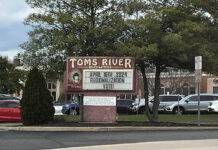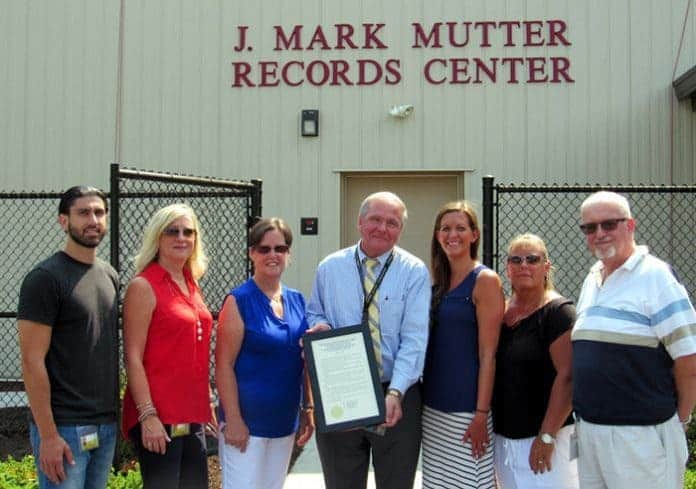
TOMS RIVER – In a town as old as Toms River, things are going to change, sometimes quite quickly. One change is that township clerk J. Mark Mutter is retiring on July 31. He said that his legacy would be the preservation of the things that make Toms River great: history, memories, people, and open space.
“The highest calling for anyone in public office is the preservation of human life,” he said.
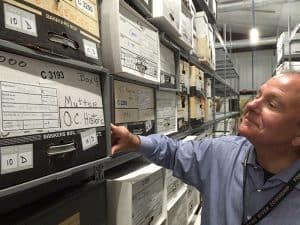
He recalled a meeting when he was the mayor. A distraught young woman whose young child was struck while trying to cross Route 37 approached the governing body and pleaded: “Mayor, don’t let another mother go through the same thing as me.” That’s why there’s a pedestrian fence there, now. He’d like to think that there’s at least one child alive today because of that fence.
“I pushed some papers around,” to get it done and save lives. “As unglamorous as it is, it’s the best thing I ever did.”
At the most recent Township Council meeting, he gave a speech about his time in government. It was couched in a historical sense, like mentioning how nine people died at the end of the Revolutionary War just outside where the clerk’s office currently is. This was the Battle of the Block House, a fort that protected early villagers of Toms River before America had won its independence.
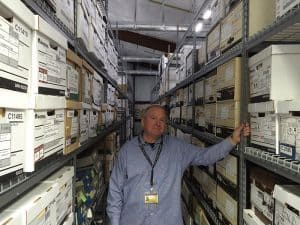
He began with apologizing and asking for forgiveness for any wrongs he might have committed. In an emotional goodbye, he spoke about his heroes, like Normandy Beach veteran Bud Lomell, and his parents, who have passed on.
He also thanked his staff and every member of the governing body, attributing personal thanks to what each of them have done for him and for the people of town.
“Forty-three years ago, I entered our Town Hall for the first time. I saw the world in black and white. I leave next week for the last time, and I see the world in shades of grey.” He said the job was a learning process, and sometimes very difficult. “Our job is to do good deeds here.”
With that, he said goodbye to township government and hello to family and friends that he will now have more spare time for.
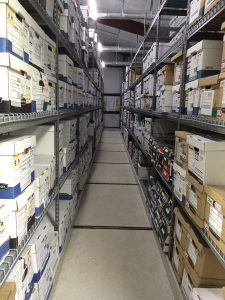
He symbolically handed over the township seal to Alison Carlisle, who he then swore in as township clerk. Carlisle was the deputy clerk prior to this. In turn, she then swore in Destiny Reynolds as deputy clerk.
Carlisle thanked her family for their inspiration and support, and her friend Mutter, who taught her how to “hold the fort.”
Mayor Thomas Kelaher said his name is synonymous with Toms River history. Indeed, as the township celebrated its 250th, Mutter was front and center, guiding the historical events.
It was for this reason that the governing body named the records center after him, the J. Mark Mutter Records Center. When the Township Council voted for this, he, as the clerk, had to take roll call on the vote. Taken completely by surprise, words failed him as he accepted their thanks. He said that the records center was more than just him, even though it will have his name on it. It was the work of scores of dedicated people.
Before the building was constructed, every department in town had its own system in storing documents, he said. There were 18 different locations. If someone needed a particular file, they might have to go into the boiler room, or the attic above the business administrator’s office, or any number of places. The office that now houses Rep. Tom MacArthur was floor to ceiling boxes.
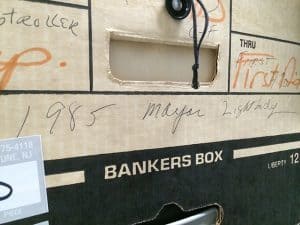
“Twenty-five years ago, when I was on the committee, you would have staff members looking for a record disappear, sometimes for days,” Mutter said.
In 2006, there was a grant from the Public Archive and Records Infrastructures Support. The township won that grant, and over the course of a few years, they began to solve the problem. First, they had to come up with a plan, then they hired Greg Horback as the records manager. He was joined by part time records assistants. Thankfully, after the state stopped the PARIS funding after a few years, the township officials saw the need for the project and continued funding it.
There needed to be a central location for all documents. Away from bodies of water in case of flooding. Confidential, so that not everyone had easy access to it. It was finished in 2015 on Church Road. It’s a modern building to house the past.
The building is essentially a warehouse. Unlike other warehouses, there’s no musty smell. That’s because the interior is climate controlled to keep the documents from deteriorating. The lighting is designed so that the papers won’t fade.
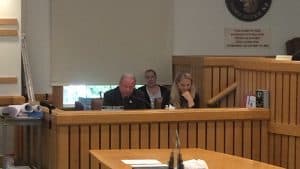
The building has a loading dock, because documents come in by the truckload. This is because each department has a few years of the most recent documents handy in their offices in case someone needs something recent.
There are racks of documents, and each rack has a different category, such as Law, Planning, or Board of Adjustment. The building can hold 13,000 Bankers boxes. They are organized like a library. Each record is computerized. So, if someone is looking for something, the computer entry will tell them about the row, shelf, and even location on the shelf. The rows are longer than many people’s houses, and are moved by turning an oversized wheel on the front, which lets the rows glide over tracks in the floor.
After so many years, certain documents can be destroyed. However, the township has to get approval from the state to do so, he said. There’s an industrial paper shredder in one room for this.
Documents referring to the Coastal Area Facilities Review Act, which governs construction near bodies of water, are permanent and will never be destroyed.
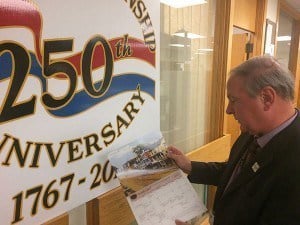
Documents relating to the contamination at Ciba-Geigy also will never be destroyed, Mutter said. They technically could be, but the township thinks it’s important enough to save them. Ciba has almost its own rack, shared with United Water and the Dover Landfill.
The fire departments in town also store their documents here.
“More and more records are digital, but you will never be fully paperless,” he said.
Also stored here are some unusual historical items, like World War I helmets of Toms River soldiers. Some artifacts have not come here, like the minute books from ancient meetings. All the minutes from 1783 and on are in a vault in town hall, he said. They have kept all the records that have existed since the British burned down the town at the end of the Revolutionary War.
There’s also room on the property to expand, if needed.
“It’s a lot of work for a lot of people,” he said. “It truly is a state-of-the-art facility.”

He credited Greg Horback as the day-to-day person who “put the puzzle together.” He also praised Cindy Asay, the assistant records keeper, who figured out how to sort it. Paul Shives, the current business administrator, used to be the administrator at Stafford Township, which also has a records building, so he was able to provide input.
“It’s a nice legacy to leave for the next generation of record keepers. Public records are the public trust,” he said, adding that he was humbled by naming the building after him. “I couldn’t have done it without the help of a lot of people who deserve as much credit as I do.”





